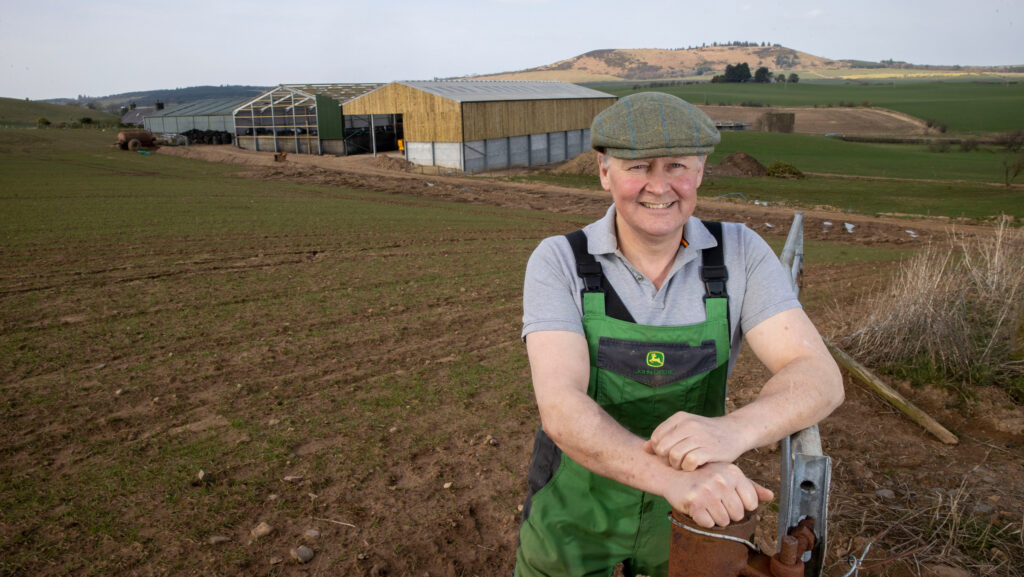Transition Farmer: Climate goals not far off completion
 Andrew McFadzean © Jeff Holmes
Andrew McFadzean © Jeff Holmes There is often a big gulf between possessing an ambition to instigate change in a farming system and applying it, but Andrew McFadzean has more or less fully achieved the goals he set when his Transition journey started four years ago.
Increasing cattle numbers and cutting finishing times, reducing dependence on external inputs, improving grassland and creating better grazing access for cattle have largely been ticked off that list since 2021.
“We are just about there,” Andrew gauges. Grazing fodder beet has allowed both an increase in cattle numbers and a reduction in bought-in feed requirement.
See also: Tips for establishing white clover in a sward
Andrew grows 12ha and had previously lifted this to include in growing and finishing rations, but last winter he grazed 3ha so successfully that this winter he is doubling the grazed acreage.
The cattle were turned onto the 2024-established crop in October at an average of 400kg.Ground conditions were good for grazing and the animals grew well, weighing an average of 470kg at housing in early January.
Farm facts: Dalchomie Farm, Kirkoswald
- 285ha split across three units
- Annual rainfall: 1,016mm
- Soil: Upland 100-280m
Transition goal progress
Approximate percentage of progress towards completion:
- Increase cattle numbers and cut finishing time – 100%
- Reduce inputs dependence – 100%
- Improve grassland and access – almost 100%
They spent the next eight to 12 weeks on a fattening ration and were slaughtered at 680kg at 17-18 months, two months earlier than previous years.
All cattle are sold to Dunbia and the buoyant beef price improved margins although, as Andrew points out, store cattle costs increased too.
This year’s 12ha crop of fodder beet was drilled in early May at 2.5-3cm. Andrew was worried about depth but drilling into moisture helped and by the end of the month it was at the four-leaf stage.
He is growing LG’s Kyros to graze and Brick to lift.
Incorporating red clover into a grass reseed in autumn 2023 has also helped reduce inputs as the silage harvested from that field the following year analysed at 16-17% crude protein.
“It made a huge difference to the winter ration – we were able to cut back concentrate use in the youngstock ration by 1kg/head/day,” says Andrew.
There are currently 300 cattle on the farm at any one time.
When cattle are grazing, access around the farm has been improved as four kilometres of tracks were laid, together with paddock fencing and water infrastructure.
Andrew is finishing the project by replacing temporary fences with permanent ones. Once done, he will have achieved 100% of his Transition objectives.
